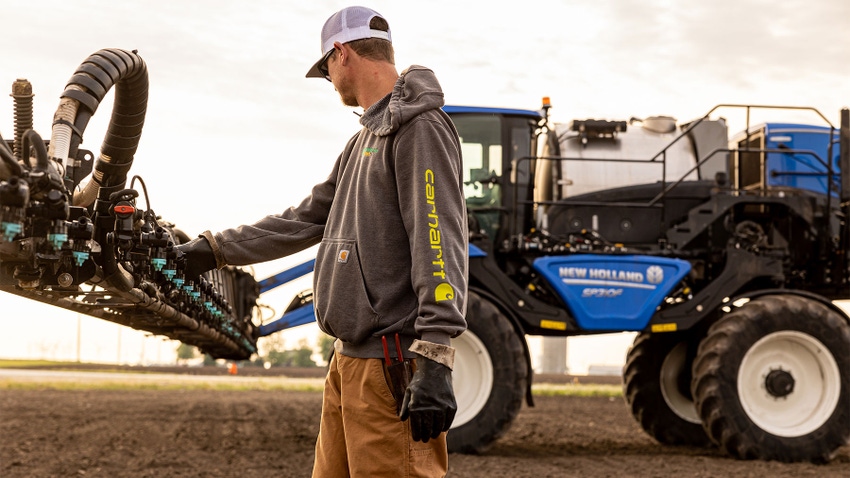April 8, 2024

While working through planting season, it can be easy to lose sight of pesticide applications just around the corner. Make sure your spraying equipment is ready to go so the transition from planting to spraying is seamless.
Brandon Weimann, precision marketing manager for New Holland Parts and Service, explains that proper sprayer maintenance can be the difference between a successful and failed crop.
“With our technology that we have today, we really focus on making sure you do it right,” Weimann says. “Because if we do it wrong, we can potentially ruin a lot of crops. We can ruin our yields.”
Where to start
The most important component to check on your sprayer is the plumbing. Make sure all nozzles are working correctly. Aaron Booth, manager of product marketing at New Holland Parts and Service, cites two main methods for testing nozzles.
For both methods, you run water through the system and measure how much flows through each of the nozzles. One test uses a calibration tool that can be ordered online, which makes for an easy testing process. However, the low-tech option is to put a bucket under the nozzle and measure the water that passes through after a set time.
“It’s going to save you a lot of time just making sure that the flow rate is accurate,” Booth says. This is also the time to make sure the spread on each nozzle is accurate, and there isn’t too much or not enough overlap between nozzle spray patterns.
Booth says to clear out any chemical buildup from strainers in the nozzles by taking a soft brush and gently breaking off buildup.
Now is also the time to check hoses and fittings to ensure there are no cracks or leaks. Make sure there are no sagging hoses that could become an issue when folding and unfolding the boom.
“There’s a lot of pinch points, so make sure that nothing is sagging,” Booth says. “A sprayer is different from any other equipment in that there’s just a lot more hose to check, and you need to be thorough to see not only if there’s something cracked now but also if there is something sagging.”
Maintain precision equipment
Precision technology on the sprayer also needs to be checked. Here is a checklist to ensure this technology will operate correctly:
Install new system updates.
Ensure data from previous seasons is downloaded.
Test the technologies to gauge how they are functioning; it is best to work with a local dealership to complete this step.
Assess GPS access to see if the system is reaching at least five satellites.
Weimann says it’s important to prepare these systems for the season because the work that’s being done is more than spraying fields. “You are not only spraying your field, but you’re also collecting data,” he explains.
Both Weimann and Booth say it’s best to run through these maintenance measures at the end of the season to make preseason preparations easier.
“That’s when it’s fresh in your mind, and you know what wasn’t working correctly,” Booth says. “If you do the majority of your maintenance then, you can put it away and have some comfort that when you bring it out next spring, you’re just checking for what could have happened while it was stored away.”
About the Author(s)
You May Also Like






